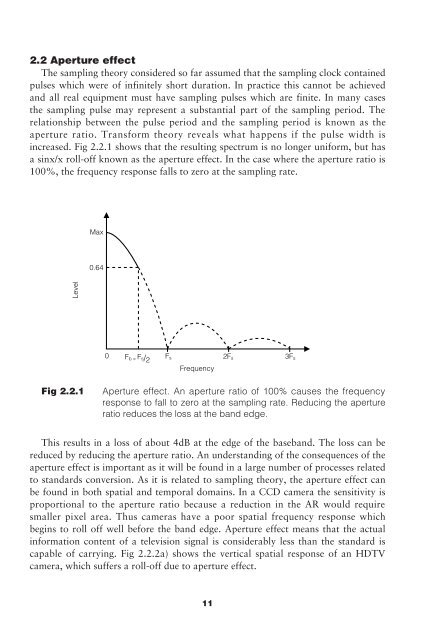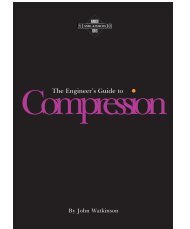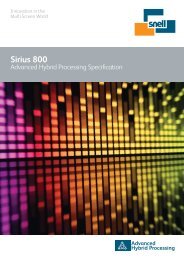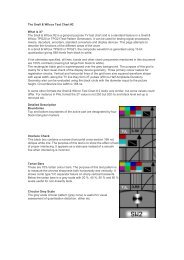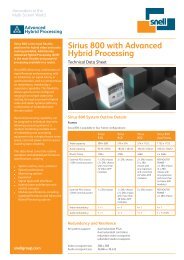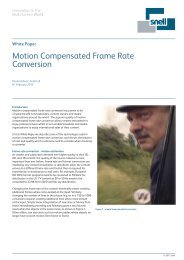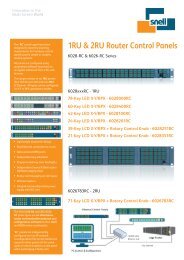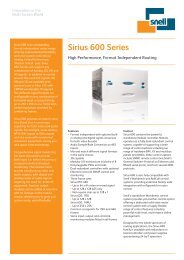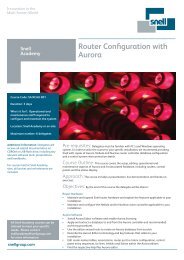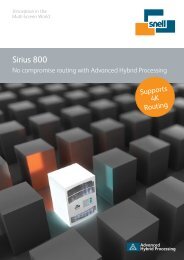The Engineer's Guide to Standards Conversion - Snell
The Engineer's Guide to Standards Conversion - Snell
The Engineer's Guide to Standards Conversion - Snell
Create successful ePaper yourself
Turn your PDF publications into a flip-book with our unique Google optimized e-Paper software.
2.2 Aperture effect<br />
<strong>The</strong> sampling theory considered so far assumed that the sampling clock contained<br />
pulses which were of infinitely short duration. In practice this cannot be achieved<br />
and all real equipment must have sampling pulses which are finite. In many cases<br />
the sampling pulse may represent a substantial part of the sampling period. <strong>The</strong><br />
relationship between the pulse period and the sampling period is known as the<br />
aperture ratio. Transform theory reveals what happens if the pulse width is<br />
increased. Fig 2.2.1 shows that the resulting spectrum is no longer uniform, but has<br />
a sinx/x roll-off known as the aperture effect. In the case where the aperture ratio is<br />
100%, the frequency response falls <strong>to</strong> zero at the sampling rate.<br />
Max<br />
0.64<br />
Level<br />
0 F s<br />
Frequency<br />
2F s<br />
3F s<br />
F b = F s/ 2<br />
11<br />
Fig 2.2.1<br />
Aperture effect. An aperture ratio of 100% causes the frequency<br />
response <strong>to</strong> fall <strong>to</strong> zero at the sampling rate. Reducing the aperture<br />
ratio reduces the loss at the band edge.<br />
This results in a loss of about 4dB at the edge of the baseband. <strong>The</strong> loss can be<br />
reduced by reducing the aperture ratio. An understanding of the consequences of the<br />
aperture effect is important as it will be found in a large number of processes related<br />
<strong>to</strong> standards conversion. As it is related <strong>to</strong> sampling theory, the aperture effect can<br />
be found in both spatial and temporal domains. In a CCD camera the sensitivity is<br />
proportional <strong>to</strong> the aperture ratio because a reduction in the AR would require<br />
smaller pixel area. Thus cameras have a poor spatial frequency response which<br />
begins <strong>to</strong> roll off well before the band edge. Aperture effect means that the actual<br />
information content of a television signal is considerably less than the standard is<br />
capable of carrying. Fig 2.2.2a) shows the vertical spatial response of an HDTV<br />
camera, which suffers a roll-off due <strong>to</strong> aperture effect.


